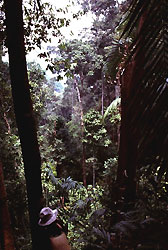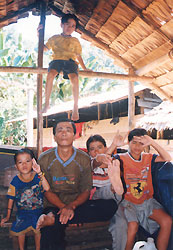The purpose of the dissertation is to present how the Penan Benalui, who have a background as a hunting-gathering culture, utilize and recognize forests, especially plants. First, the useful plants for the Penan Benalui and their classification and naming systems for plants are described, and then they are compared with studies of agriculturists of Borneo. Second, I examine the extent to which Penan Benalui individuals accurately recognize plants. I also look at how individuals learn plants. Finally, I discuss how changes in their lifestyle are affecting their ethnobotanical knowledge. (3) Useful plants and plant classification and names were studied. The main results are: (a) the Penan Benalui use a smaller number of plants both for medicinal purposes and for food (eating the leaves) compared to agriculturists in the same area, (b) they use many secondary lexes for plant names, and (c) it seems that they name most plants, including non-useful ones, nearly to the scientific species level. The first point (a) is in agreement with the argument by Brown (1985) that hunter-gatherers utilize more limited flora/fauna than agriculturists, but the second point (b) does not agree with his generalization that hunter-gatherers do not develop secondary names for plants and animals. There is a possibility that the deviation is caused by linguistic influences from neighboring agriculturists and the diversity of the flora of Borneo, where each genus tends to have many species. Based on Brown’s generalization, Berlin (1992) hypothesized that people learned to observe nature carefully through cultivation, but the case of the Penan Benalui strongly suggests that hunter-gatherers also observe plants carefully. It is also suggested from the last point (c) that plant names cannot be explained simply by utilitarian reasons, though more study is needed to confirm this observation. Reference: |


 21st Century COE Program
-Aiming for COE of Integrated Area Studies-
21st Century COE Program
-Aiming for COE of Integrated Area Studies-